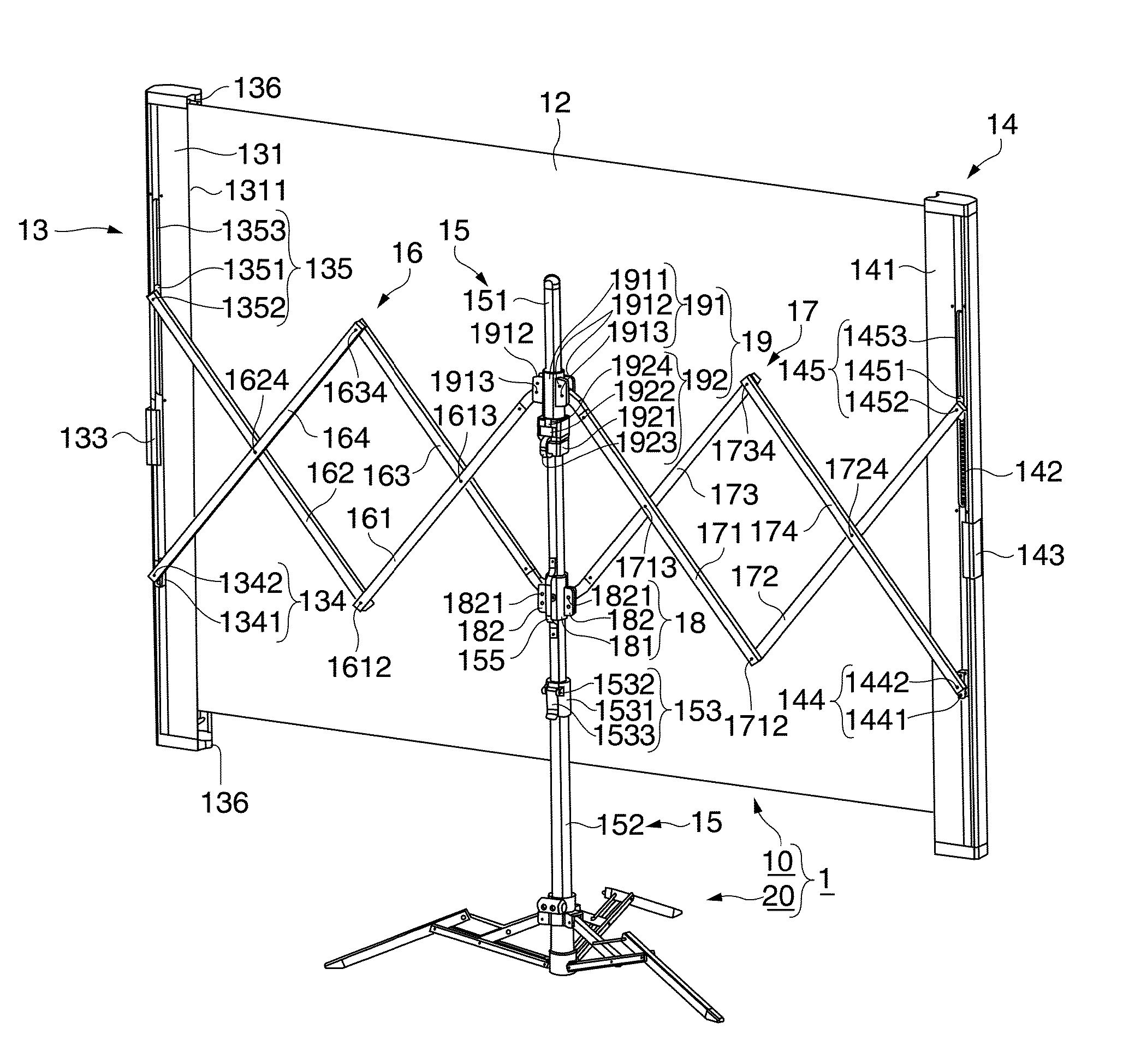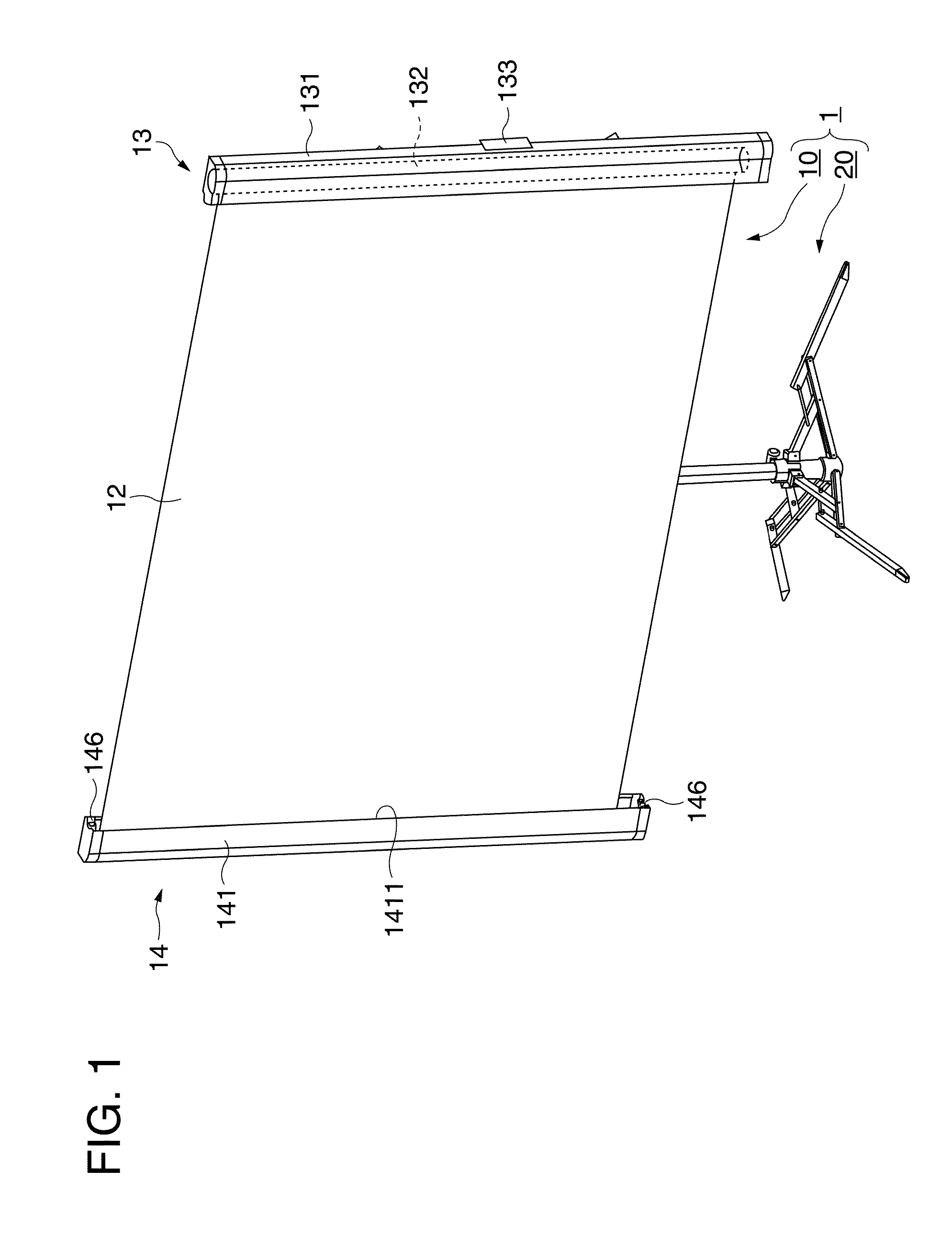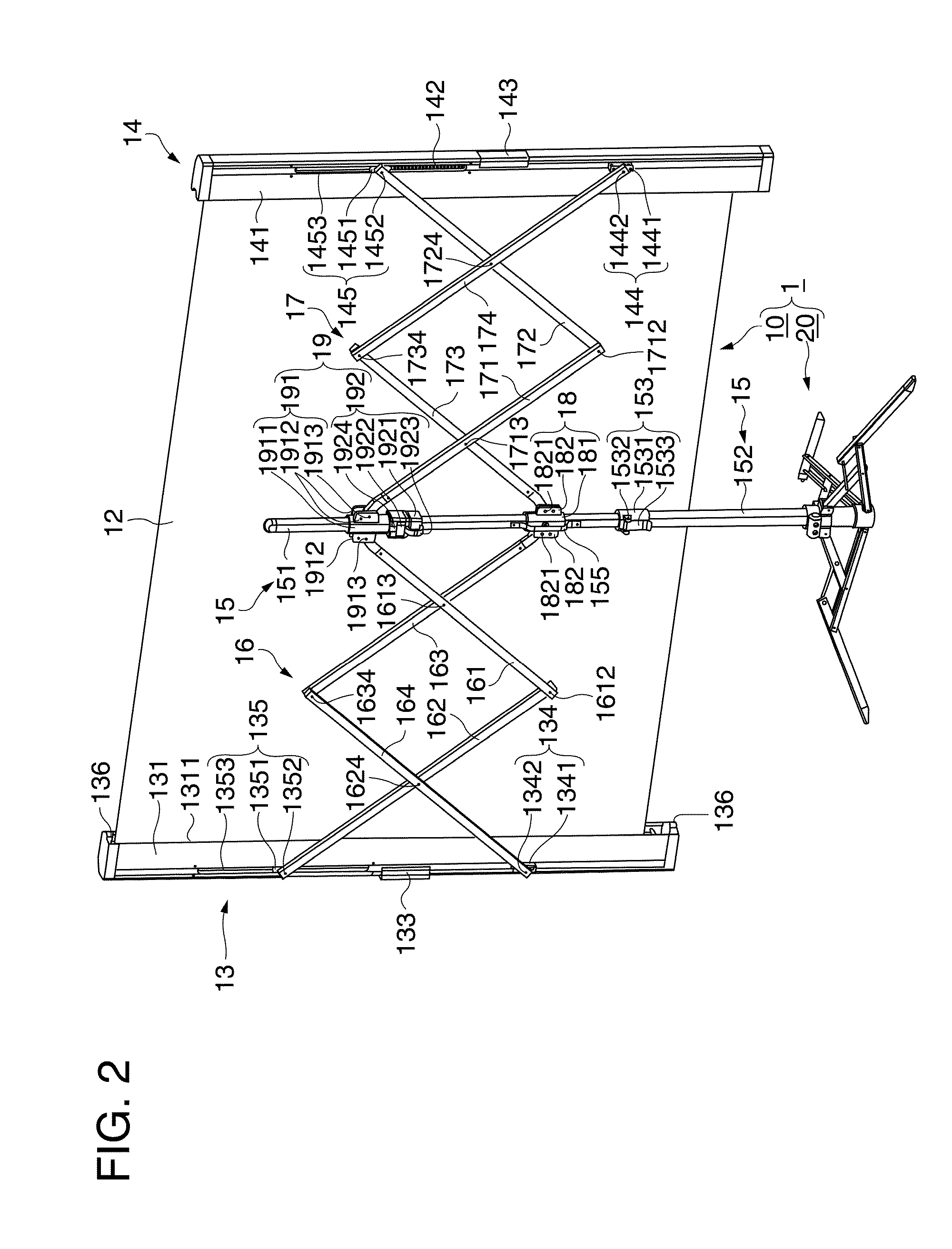Screen
- Summary
- Abstract
- Description
- Claims
- Application Information
AI Technical Summary
Benefits of technology
Problems solved by technology
Method used
Image
Examples
first embodiment
[0062]FIG. 1 and FIG. 2 are perspective views showing a schematic configuration of a screen according to a first embodiment. FIG. 1 is a perspective view of a screen 1 viewed from the front from which image light enters, and FIG. 2 is a perspective view of the screen 1 viewed from the back side. FIG. 3 is a partially enlarged view of a principal portion of the screen viewed from the back side. FIG. 3 shows a second pantograph mechanism 17, a fixed column 15, a second supporting unit 14, and so on. Referring now to FIGS. 1 to 3, the configuration of the screen 1 will be described. The “left” and “right” described below mean the left and right of the screen 1 when viewed from the back side.
[0063]On the screen 1, the image light projected in an enlarged scale, for example, from a projector or the like, not shown, is projected. As shown in FIG. 1 and FIG. 2, the screen 1 roughly includes an image projecting portion 10 and a supporting leg 20.
[0064]As shown in FIG. 1 or FIG. 2, the image...
second embodiment
[0179]FIG. 13 is a partial enlarged drawing when viewing a principal portion of a screen according to a second embodiment from the back side. A screen 2 in the second embodiment is different from the screen 1 in the first embodiment only in the position to install a coil spring 148 as the urging member (which corresponds to the coil spring 142 in the first embodiment), and other members are the same as the first embodiment. In FIG. 13, the same components as in the first embodiment are designated by the same reference numerals. Therefore, in the following description, only the configurations different from the first embodiment will be described.
[0180]In the screen 2 in the second embodiment, the coil spring 148 as the urging member is hooked on the pivotal shaft 1712 and the pivotal shaft 1734 which constitute the second pantograph mechanism 17 as shown in FIG. 13. The coil spring 148 is formed as a tension coil spring, and includes a spring body 1481 and hooks 1482 formed at both e...
third embodiment
[0183]FIG. 14 is a partial enlarged drawing viewing a principal portion of a screen according to a third embodiment from the back side. A screen 3 in the third embodiment is different from the screen 1 in the first embodiment only in the position to install a coil spring 200 as the urging member (which corresponds to the coil spring 142 in the first embodiment), and other members are the same as the first embodiment. In FIG. 14, the same components as in the first embodiment are designated by the same reference numerals. Therefore, in the following description, only the configurations different from the first embodiment will be described. In FIG. 14, the fixed column 15, the arm sliding unit 19, and the arm fixing unit 18 are shown and other members such as the first pantograph mechanism 16 and the second pantograph mechanism 17 are not shown.
[0184]According to the screen 3 in the third embodiment, the coil spring 200 as the urging member is installed in the interior of the first fi...
PUM
 Login to View More
Login to View More Abstract
Description
Claims
Application Information
 Login to View More
Login to View More - R&D
- Intellectual Property
- Life Sciences
- Materials
- Tech Scout
- Unparalleled Data Quality
- Higher Quality Content
- 60% Fewer Hallucinations
Browse by: Latest US Patents, China's latest patents, Technical Efficacy Thesaurus, Application Domain, Technology Topic, Popular Technical Reports.
© 2025 PatSnap. All rights reserved.Legal|Privacy policy|Modern Slavery Act Transparency Statement|Sitemap|About US| Contact US: help@patsnap.com



